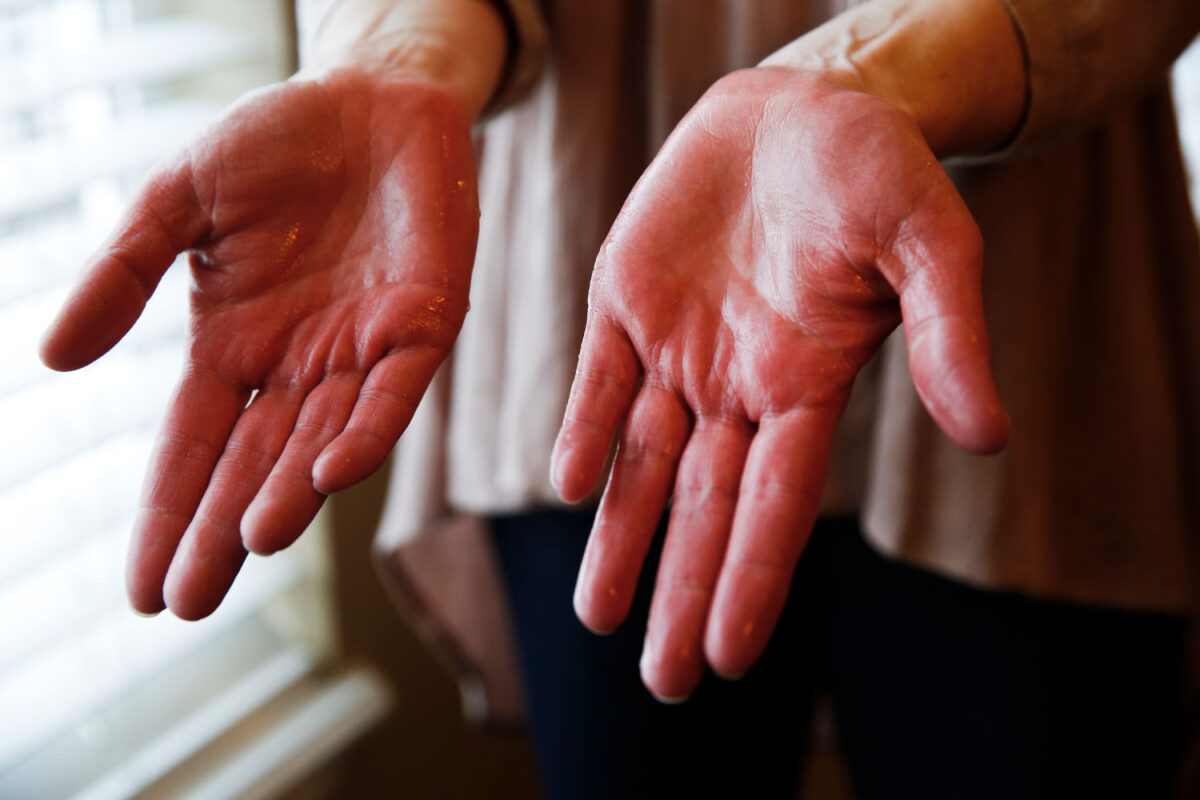No sweat: Surgery relieves problems of excessively sweaty palms
Draper resident Brittany Moffat struggled with extremely sweaty hands, feet and underarms as the result of hyperhidrosis for most of her 37 years.
Moffat finally found relief through a surgery she had a week ago, and she calls it life-changing.
Moffat’s doctor, John Mitchell, a cardiothoracic surgeon at Utah Valley Hospital, said the surgery has been performed for 15 or 20 years, but a recent advancement has allowed a minimally invasive version in which the total patient commitment in the hospital is about four hours.
“We love this operation,” Mitchell said. “There is no more grateful a patient than someone who has this problem with sweaty hands.”
It may sound minor, but the problem of hyperhidrosis is one of a major magnitude, going far beyond what the average individual experiences during a state of nervousness.
“One percent of the population has excessively sweaty hands,” Mitchell said. “When you are working hard, your hands will normally sweat. The type of sweat we are talking about is chaotic, unpredictable, and unprovoked sweat of the hands. It is very intense sweating.
“Typically in the matter of 30 seconds to a minute the patient can hold the palms up right and the sweat pools. If the hands are turned over, it runs off in a stream.”
Not only was Moffat in the one percent of the population with the problem, she was at the top of that group, Mitchell said.
“Mrs. Moffat has probably the worst sweat I have seen,” he said. “It was really drastic.”
Moffat found immediate relief from her surgery.
“It affects small things and big things. It is life-changing,” she said. “I am still recovering but I haven’t had sweaty hands or sweaty feet since the day of the surgery. It is great and bizarre. It has made every difference. There is not any situation or scenario that I have had undue anxiousness because of the sweat.”
It used to be that if Moffat was worried about something her hands would become sweaty, which would make her worry more, starting a downward spiral of emotions.
“I used to have to use a hand towel to keep my hands dry when I would do my hair or put on makeup,” she said. “It even affected small, daily tasks.”
Moffat chose Utah Valley Hospital for the surgery.
“I have had this for as long as I can remember,” she said. “I honestly cannot remember not having it. It has affected me a lot, all through elementary school and college. Simple things like taking notes were challenging. My hands would sweat so bad they would saturate the paper and it would curl. I would have to recopy my notes.
“I liked to participate in the plays and performances but it always got worse when I got nervous and anxious. I was worried somebody would notice it dripping. I didn’t sign up for cotillion or ballroom dance because you would have to hold hands.”
Moffat is looking forward to doing activities she would previously avoid — simple things like shaking people’s hands without being nervous.
Because her hands would be so wet, she stopped rock climbing, but she is not sure if she will pick that hobby up again.
Mitchell said he has done approximately 60 hyperhidrosis surgeries with the vast majority of those in the last five months. It is not necessarily the first treatment recommended for a patient suffering from the disorder, but it can be done if the symptoms are sufficiently severe.
“There are some medical interventions that will be attempted before we consider surgery,” he said. “If they fail there is a surgical solution as well. This is a very straightforward operation with a great recovery. Even before the patient is fully cognizant from the anesthetic, they recognize the noise that dry hands make when you rub them together, which they have never been able to do.”
The surgery for hyperhidrosis was discovered as a side effect of another similar surgery. It involves making three 5-mm. incisions through a scope between the ribs and removing a portion of a nerve.
“It is a life-changing operation,” Mitchell said. “It generates confidence in the patient. It makes them much more engaging with other people. It can eliminate inhibition that people have when they can’t have hand-to-hand contact with another person.”
Moffat says she wishes she had the surgery earlier in life.
“It would have saved me a lot of stress, frustration and heartache,” she said.









